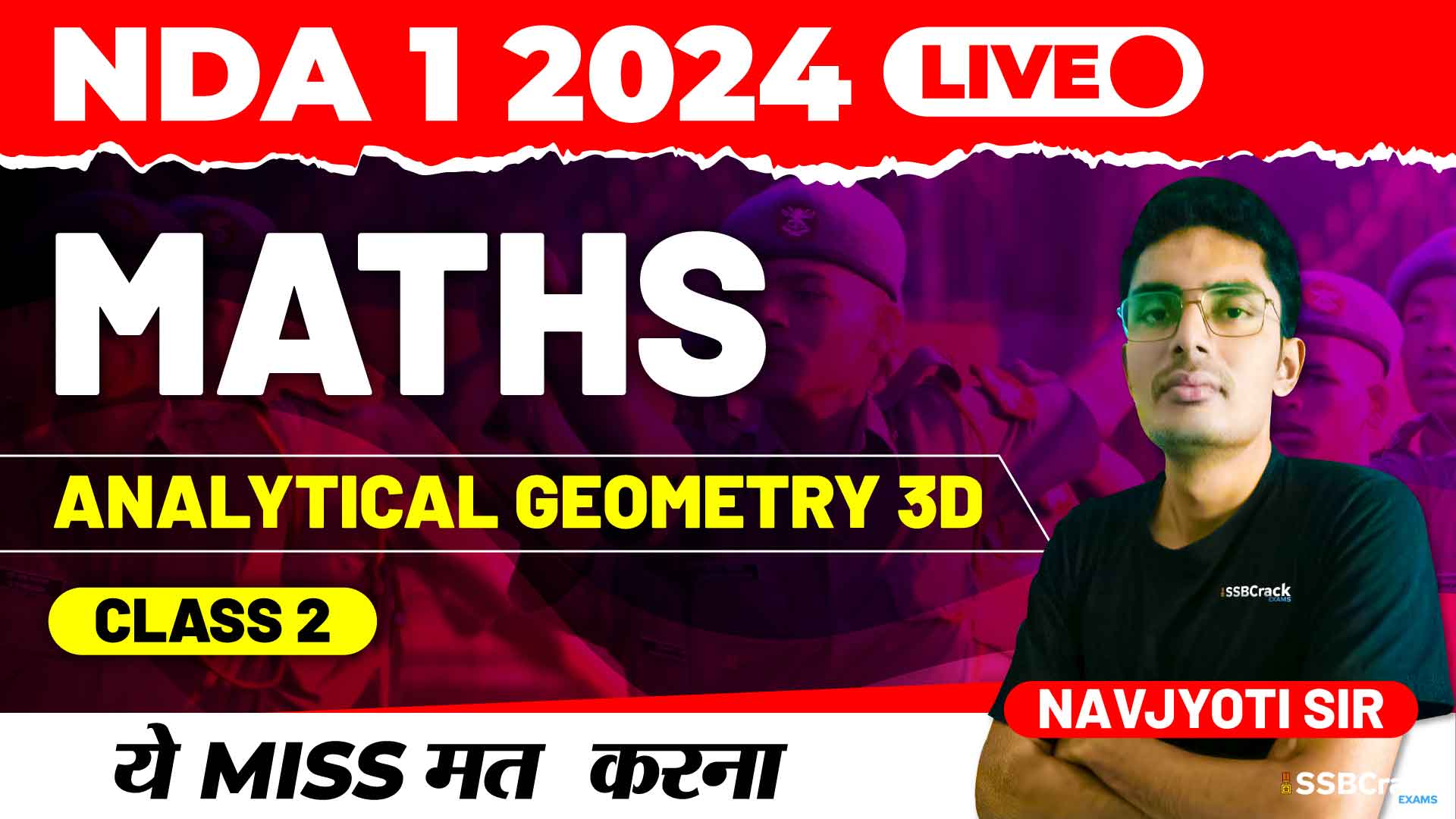In the second class of the NDA 1 2024 Exam Mathematics session focusing on Analytical Geometry in three dimensions (3D), students delved into the intricacies of plane geometry. This class aimed to revise key concepts related to the equations of planes, the angle between planes, skew lines, the shortest distance between skew lines, and the angle between a plane and a line. Through the use of Multiple Choice Questions (MCQs), students had the opportunity to apply these concepts and reinforce their understanding. Let’s delve into the highlights of this class and the significance of mastering 3D analytical geometry for exam success.
Understanding Different Forms of Equation of a Plane
In 3D geometry, a plane is a flat, two-dimensional surface that extends infinitely in all directions. The equation of a plane can be represented in various forms, including the general form, the intercept form, and the normal form. In Class 2, students revised these different forms of the equation of a plane, understanding how each form provides unique insights into the geometric properties of the plane. MCQs were used to test students’ comprehension and ability to manipulate plane equations in different forms.
Exploring the Angle Between Two Planes
When dealing with multiple planes in 3D space, understanding the angle between them is crucial for analyzing their relative positions. In this class, students revisited the concept of the angle between two planes, learning how to calculate it using the normal vectors of the planes. Through MCQs, students practiced identifying the angle between given pairs of planes, honing their skills in geometric reasoning and calculation.
Analyzing Skew Lines and Their Shortest Distance
Skew lines are lines in 3D space that do not intersect and are not parallel. Understanding the relationship between skew lines and calculating the shortest distance between them are essential skills in 3D geometry. In Class 2, students explored the properties of skew lines and learned methods for determining the shortest distance between them. MCQs provided opportunities for students to apply these methods and assess their proficiency in solving problems involving skew lines.
Determining the Angle Between a Plane and a Line
In 3D geometry, understanding the angle between a plane and a line is essential for analyzing their relative orientations. Students revisited this concept in Class 2, learning techniques for calculating the angle between a given plane and line. MCQs tested students’ ability to apply these techniques and determine the angle between specific pairs of planes and lines.
Significance of MCQs in Concept Application
The use of MCQs in Class 2 served as an effective tool for assessing students’ understanding and application of 3D analytical geometry concepts. By presenting scenarios and problems in MCQ format, students were challenged to apply their knowledge to solve practical problems and make informed decisions. Additionally, MCQs provided valuable feedback to students, allowing them to identify areas for improvement and focus their study efforts accordingly.
Conclusion
In conclusion, Class 2 of the NDA 1 2024 Exam Mathematics session on Analytical Geometry in 3D offered students a comprehensive review of key concepts related to planes, angles, skew lines, and their relationships. Through the use of MCQs, students had the opportunity to apply these concepts in various scenarios and assess their proficiency. By mastering the fundamentals of 3D analytical geometry, students are better equipped to tackle exam questions with confidence and precision, ultimately leading to success in the NDA 1 2024 Exam.
















